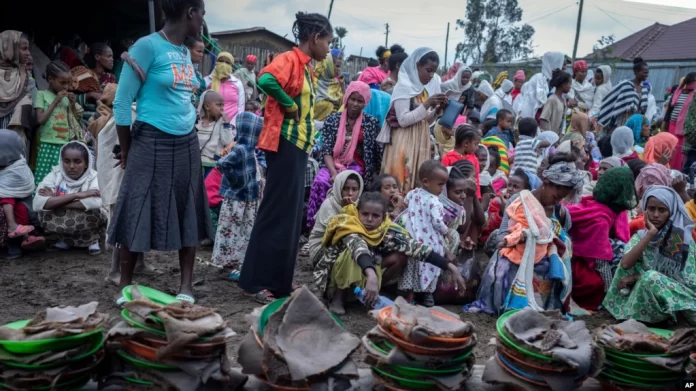Despite Ethiopia’s declaration of a humanitarian cease-fire with Tigrayan rebels, aid organizations say they are having difficulty getting food and medicine to those who need it. Even outside of Tigray’s worst-affected districts, which are off-limits to media, delivering relief is fraught with dangers and difficulties.
Four months after the Tigray People’s Liberation Front, or TPLF, left the area, charred tanks and other destroyed military equipment sit along the roadway in Ethiopia’s northern Amhara region. The United Nations estimates that 9.4 million people in the Amhara region, as well as the neighboring Afar and Tigray regions, require humanitarian assistance as the region recovers from a horrific civil conflict. However, assistance has been sluggish to arrive.Seventeen-year-old Ahmed Nuru was living in the Oromia region, but said he had to flee after facing persecution for his Amhara ethnicity. He lost his mother when he was young. Last year, his father died after being unable to get lifesaving treatment due to the war’s impact on the local health care system.
Now, Nuru is left to take care of his sisters, ages 10 and 8. He said life is very difficult and doesn’t know how he will be able to raise his sisters.
Daniel Tigabu, a public health officer based in the camp for the displaced where Ahmed lives, said there is not enough medical equipment or medicine. The center is running out of basic medical kits, as well as a shortage of kits for malaria, hepatitis and HIV testing
In the Amhara region, tens of thousands of people reside in displaced persons camps. Others, like Tsgenet Tibebu, who lost her husband during the TPLF fighting, live in host communities.
Tibebu said she and her kid rely on the kindness of her husband’s friends, which includes a place to stay. She stated she is a homemaker who has nothing and is waiting for help to raise her two children as tears well up in her eyes. Even though the owners have offered her a place to stay, she believes she should pay rent. She worries how she will be able to plan for the future if she doesn’t have anything.
Mulugeta Kebede, an aid worker who works in the Hayk camp, spoke to VOA and said stories like Nuru’s and Tibebu’s are not uncommon across Amhara.
He said the situation makes aid workers cry day and night. He said if someone is hungry, they can’t sleep because they think about their empty stomach. He said he has seen displaced people sell pans or mattresses to surved and added that the situation is at a critical stage.
About 30,000 people displaced by conflict live just north of Hayk, in Weldiya. A local government representative, Habtemariam Assefa, North Wollo Zone spokesperson, said there was a little support shortly after TPLF left, after the area had been a conflict zone for months. But, he said, aid has been distributed only twice since and the aid provided by the U.N. or the federal government is not enough.
North of the Amhara region, in Tigray where journalists are banned from entering, the U.N. said the situation is worse, with famine-like conditions. Tigray is under a de facto humanitarian blockade, according to the U.N.
For now, all Ahmed Nuru and his sisters can do is try to scrape by and hope more assistance arrives soon.

